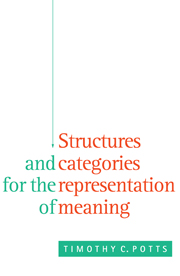1 - Linguistics: strings
Published online by Cambridge University Press: 23 September 2009
Summary
STRING GRAMMARS
Throughout this book, I shall be using ‘grammar’ in the sense given to it by mathematicians. That calls for a word of explanation, for the terms ‘grammar’ and ‘syntax’ are in process of interchanging their meanings and the new usage has not yet crystallized, with consequent occasions of confusion.
The way in which we classify linguistic expressions and the way in which which we analyse them structurally depends upon our purposes. People's jobs, for example, can be distinguished into manual versus ‘white-collar’ or, alternatively, into those concerned with production and those concerned with providing services. Sometimes we need one classification, sometimes the other. Language is no exception. The branches of learning whose subject-matter is language already exhibit at least three distinct (though not unrelated) purposes. Oldest, perhaps, is the study of meaning and of validity in argument. Then came grammar (now, more often, called ‘syntax’), the description, roughly at the level of words and phrases, of those combinations which are used in a given language. More recently, phonology and phonetics have sought to classify sounds and their combinations, from several points of view, including, for example, the relation of sound production to the physiology of the throat and mouth. There is no a priori reason to suppose that the same structural analysis will be apposite to all of these purposes. Indeed, quite the contrary, although, to the extent to which the purposes are related, it should be possible to inter-relate the corresponding structural systems.
- Type
- Chapter
- Information
- Publisher: Cambridge University PressPrint publication year: 1994

